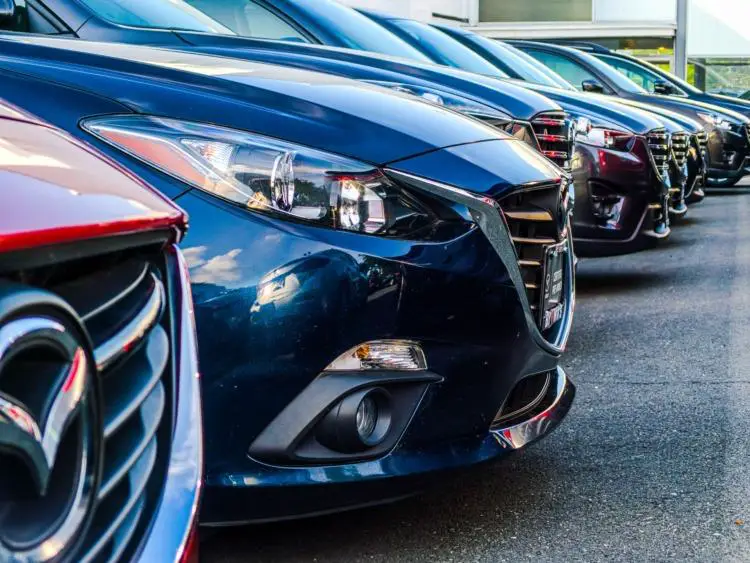Kenya and Nigeria have been identified as key to unlocking the potential of the continent’s automotive market for spare parts, accessories and components of vehicles, known as aftermarket.
This is according to a new report commissioned by Messe Frankfurt Middle East, organiser of Automechanicka Dubai – the largest international trade show for the Middle East and Africa’s (MEA) automotive aftermarket and service industry.
The report points to a resurgence of international interest in the African market, which boasts one of the world’s fastest-growing populations, with the United Nation’s 2021 population estimates putting Africa at 1.374 billion.
“Every year, more people are entering the labour force,” says the report.
“Though this development poses significant risks in terms of the need for job creation, it also drives the growth of an emerging middle class.”
And while motorization rates across the continent remain comparatively low though expanding, Africa could prove a survival bastion for the conventional aftermarket market. Aftermarket describes a market for spare parts, accessories and components of vehicles.
“As the sector is under pressure in many parts of the world due to peaking vehicle fleets and technological disruptions, Africa is one of the last regions with ample room for growth of the ‘traditional’ automotive aftermarket,” said the report.
With an ageing fleet requiring larger maintenance efforts and electric vehicles unlikely to gain significant short to medium-term market shares due to the continent’s infrastructure constraints, the aftermarket remains buoyant.
Read: Kenya bans importation of vehicles under 2011
The report singles out Nigeria, where 12 million vehicles are on the road, and Kenya, with a national fleet of two million (almost two-thirds of which are more than 15 years old) as nations with the highest promise in “the last underexplored market”. Both countries have the largest automotive aftermarkets in West and East Africa but require different approaches to access the potential.
“Though precise numbers are difficult to come by, the Nigerian parts market overall might stand at approximately US$4 billion per year. In Kenya, the total might stand at around US$500 million,” said the report.
Though there is a fledging parts manufacturing sector in Kenya, Africa remains largely reliant on imports to keep its fleets moving. Kenya is also emerging as a trans-shipment base to neighbouring countries including Uganda and Rwanda.
“This makes Kenya an interesting regional hub for the aftermarket,” says the report – citing Dubai-based trading companies as key suppliers making the emirate the second most important parts supplier to Kenya after China. Nigeria, which does not have a home-grown manufacturing sector is imports reliant with many turning to Middle Eastern suppliers and leading both countries to develop e-commerce capabilities.
“Both countries certainly do offer opportunities,” says the report.
“For many global players in the aftermarket, the key first step to realizing these is to decide to start engaging with these markets more actively.”
Overall sector
A 2015 report by Deloitte revealed that the volume of imported cars and motorcycles in Kenya has been on the increase due to the availability of attractive credit from financial institutions and the rise of the middle class.
Additional data by the Kenya National Bureau of Statistics (KNBS) the volume of imported vehicles between 2003 and 2012 have grown at over 300% from 33 000 units to 110 474 units.
Passenger vehicles were Kenya’s fourth-largest import overall in 2014, valued at US$420 million and making up 2.3% of total imports (by value) while commercial vehicles ranked seventh, valued at US$370 million.
“If the current trend of 10% to 12% growth per annum on vehicle imports is to be maintained, Kenya will have five million vehicles on the road by the year 2030,” Deloitte said.
Who takes Africa’s burgeoning motor vehicle market?
At the same time, the study by Deloitte further finds that owing to the lack of domestic vehicle production, Nigeria is highly dependent on imports to meet its domestic demand.
In 2014 for instance, passenger vehicles constituted the second-largest import category after petroleum oils or bituminous minerals.
Overall automotive-related imports stood at US$6.9 billion (passenger vehicle imports: US$2.9 billion) accounting for approximately 11.5% of Nigeria’s total imports.
While auto imports recorded rapid growth between 2004 and 2014, the current slowdown in the economy and the recent introduction of high import duties on vehicles linked to the new automotive policy has led to approximately a two-third contraction in vehicle imports according to industry players.
